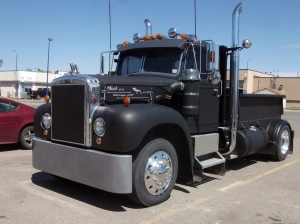One of the tools in a worship musicians toolkit that is the most foreign to traditionally trained pianists or keyboardists is the pad. We’ll spend this first post describing pads and their role in the band as well as giving some tips for playing them.
A Pad by any other name…
What makes a pad a pad? It’s probably not wise to try to define them too narrowly but I think that these sounds tend to have a few things in common:
- They tend to be thick resonant sounds
- They tend not to be percussive sounds
- They tend to have a slow attack
- They tend to have a long release
- They tend to have some sort of modulation or motion to hold the listener’s interest
In my mind the classic pad of all time would have to be the Hammond B3 organ, and this sound still gets a lot of play in our worship sets. The Hammond hits some of our points above – resonant, lots of modulation with the Leslie, and also breaks some of our rules – it has an attack and release time of zero and can be percussive too!
Pads, the Mack Truck of Worship
All songs need a certain amount of power to keep the momentum of the song going. We can generate that energy in a lot of different ways – some of them showy, and some of them understated. The pad is a song power source that can provide a lot of juice without a lot of flash. A nice pad tickles the ear and fills in the sonic spaces left open by the other instruments without dominating the song (unless domination is what you’re going for). A pad can also subtly shift registers to boost the energy of a chorus or bridge without smacking the audience in the face with volume.
Practically speaking the pad fills out the arrangement and provides a sonic foundation for other instruments to do their thing without leaving a hole in the mix. Sometimes a pad gets to be the star of the show especially during quiet sections or even during a high energy chorus. It is precisely because they are so versatile that they seem to make it into every song (in fact if you are keen on originality or breaking with the trend try leaving them out entirely).
There is a fine line between Mud and Silky Smooth Goodness
With so much power at your fingertips there is the potential to do a lot of damage to the overall mix and to step on the toes of your bandmates. Here are some easy techniques to keep you sounding good and to avoid ending up in a big mess of sonic mud.
Sparse chord voicings are the default. Instead of trying to hit all the parts of that Gsus2add11 think in terms of open fourths, fifths, sixths, octaves or some combination of those in the left and right hands. The thick timbre of a pad sound looses its distinctiveness when close notes bleed into each other. Occasionally you may make use of this but generally it seems better to avoid it.
Think in terms of whole notes or longer. Pad sounds take time to mature and typically do not respond well to rapid playing. It can be OK to play the root and fifth in the key of the song and hold through several chord changes so don’t feel the need to keep up with every change. If you feel that things are getting stale try moving up and octave or changing the interval you are playing.
Try changing the pad sound for special parts of the song. Sometimes it can be nice to bring in a more aggressive pad during chorus or bridges. This can be accomplished by modifying the pad you start with or bringing in a whole new patch and can keep things interesting for the audience and for you!
Look for the openings and play there. Sometimes sitting your pad under that distorted rhythm guitar may be what you are going for but generally you should try to find the registers where there is no other instrumentation or singing and play there. This helps fill out the sonic energy of the song and builds power without diminishing the articulation and detail in the song. Remember that these zones may change as the melody moves or other instruments move into new parts!
Keep layered pads out of the way. If you are called on to play a more traditional melodic role with piano or another instrument and want to add a pad to fill out the sound you can run the risk of making things pretty muddy. Try shifting the pad up an octave where it can add high end energy or down an octave to fill up the midrange when you are leading from a higher register.
Give it a try!
Playing pads can seem boring at times but they really provide an opportunity to be expressive in ways that are different from playing runs or hooks. I know that learning and implementing the above tips has really changed how I view pads and my role in the band when a pad is called for. What are your tips or tricks for pad playing? What pad sounds do you love that break the pad model given above? Let us know in the comments!
Mack Truck image courtesy of dave_7 on Flickr and the creative commons license.

Great tips. I`m a ‘Brazillian keyboard guy’ and i use many pads in low music or immersive songs.